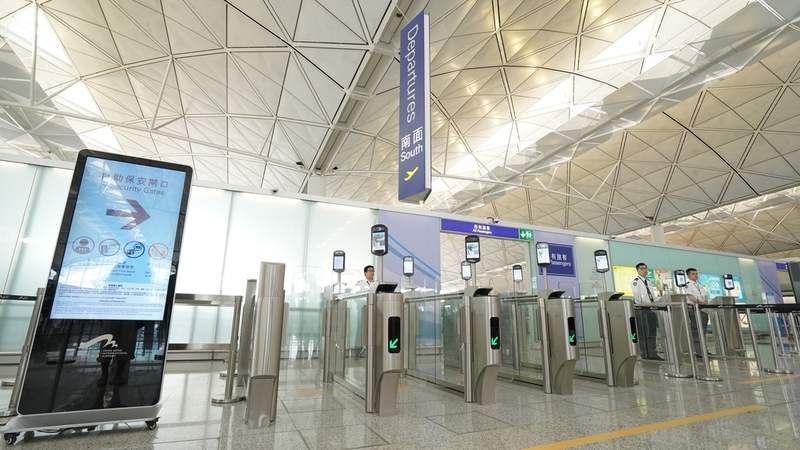
Hong Kong International Airport (HKIA) has launched e-Security gates within Terminal 1 to validate the documents of departing travellers prior to their entry into the restricted area.
The installation of biometric-based security gates is part of the latest smart initiative launched by Airport Authority Hong Kong (AA) to enhance the overall passenger experience.

Discover B2B Marketing That Performs
Combine business intelligence and editorial excellence to reach engaged professionals across 36 leading media platforms.
During the first phase, a total of four e-Security Gates have been deployed at the South Departure Hall at Terminal 1, with more to be introduced in a phased manner.
All 44 planned e-Security Gates will be installed by the first quarter of next year. They are aimed at achieving near-zero queuing time for passengers.
Airport Authority Hong Kong Smart Airport general manager Chris Au Young said: “This new smart initiative will speed up and enhance the accuracy of the document checking process. It also marks the first step in our efforts to streamline passenger boarding at HKIA by using biometrics.
“In the near future, HKIA will extend the use of biometrics and facial recognition to check-in and boarding procedures with the aim of using passengers’ faces for identity verification throughout their departure journey at HKIA, providing a seamless experience for travellers.”

US Tariffs are shifting - will you react or anticipate?
Don’t let policy changes catch you off guard. Stay proactive with real-time data and expert analysis.
By GlobalDataAny passenger aged more than 11 years and holding a valid electronic travel document can use the new service. No prior enrolment is needed.
At present, the airport security service team check travel documents manually to ensure passengers’ identities match the information shown on their boarding passes.
Once the smart gates are installed, the document reading devices and cameras embedded in the e-Security Gates will replace this manual procedure. The service is set to allow passengers to scan their documents and boarding passes for verification by facial recognition technology.
The entire process is expected to take just 20 seconds to complete.





